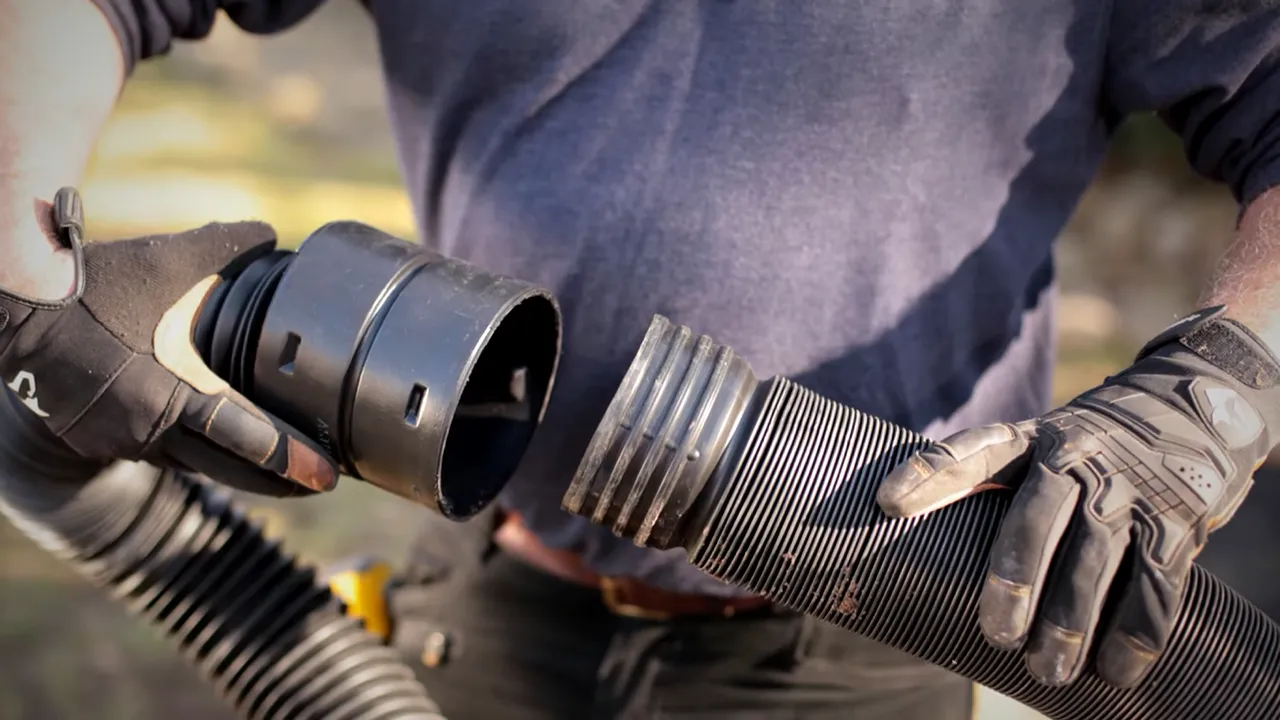To install corrugated drain pipe, dig a trench, lay the pipe with the holes facing downwards, and connect multiple sections securely using a coupling. Once installed, cover the pipe with gravel or soil.
Installing a corrugated drain pipe is an essential step in managing excess water in your yard. Whether you’re dealing with water pooling around your foundation or trying to prevent erosion on a slope, a properly installed drain pipe can redirect water away from your property.
In this guide, we will discuss the steps to install a corrugated drain pipe efficiently and effectively. By following these steps, you can ensure that your drain pipe is correctly installed and functions to its full capacity.
Why Install A Corrugated Drain Pipe
Installing a corrugated drain pipe is an essential step in protecting your property from water damage, preventing soil erosion, and maintaining a proper drainage system. By understanding the benefits of a corrugated drain pipe, you can take proactive measures to safeguard your property and ensure effective water management.
Protect your property from water damage
Water damage is a common issue that can wreak havoc on your property, leading to costly repairs and restoration. By installing a corrugated drain pipe, you can proactively prevent water from pooling near your foundation, basement, or other vulnerable areas. The corrugated design of these pipes allows for efficient water flow, directing excess water away from your property.
Prevent soil erosion
Soil erosion can cause severe damage to your landscape and surrounding areas. When water is not properly drained, it can erode the soil, leading to the loss of topsoil and the destabilization of the ground. By installing a corrugated drain pipe, you can effectively redirect water runoff and prevent soil erosion, preserving the integrity of your property.
Maintain proper drainage system
A well-maintained drainage system is crucial for efficient water management. By installing a corrugated drain pipe, you can ensure that excess water is channeled away from your property, preventing water accumulation and potential damage. Whether you are dealing with heavy rainfall or a high water table, a corrugated drain pipe can provide a reliable solution to maintain proper drainage.
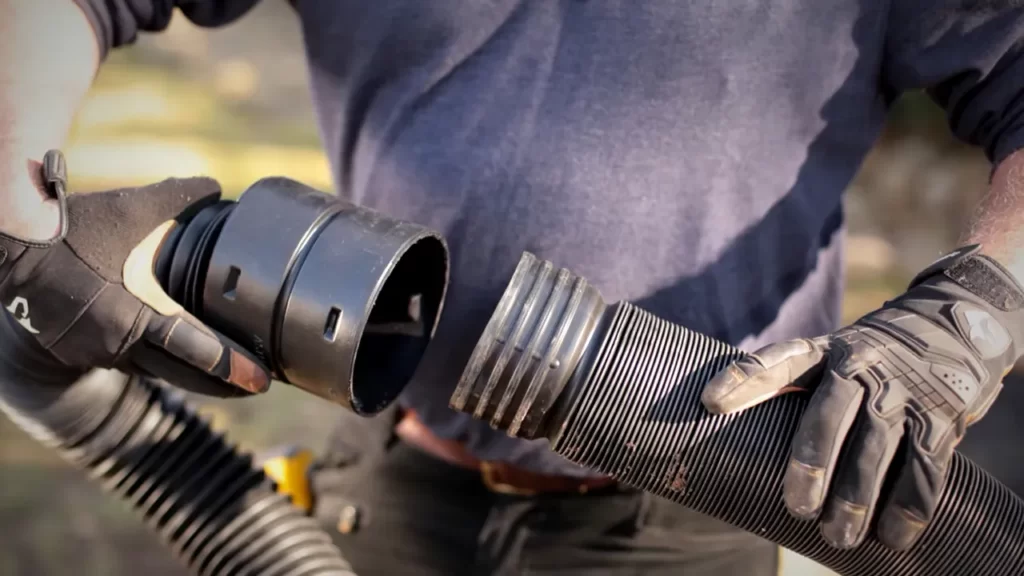
Types Of Corrugated Drain Pipes
When it comes to installing a drainage system, using the right type of pipe is crucial for its effectiveness and longevity. Corrugated drain pipes are a popular choice due to their flexibility and durability. There are two main types of corrugated drain pipes: single-wall corrugated pipe and double-wall corrugated pipe. Let’s take a closer look at each of them.
Single-wall corrugated pipe
The single-wall corrugated pipe is a versatile option that is suitable for light-duty applications. It is often used in residential projects, such as drainage around house foundations, French drains, and landscaping projects. The single-wall design allows for easy installation and maneuverability, making it an ideal choice for DIY enthusiasts.
This type of pipe is made from high-density polyethylene (HDPE) material, which provides excellent resistance to corrosion, chemicals, and harsh weather conditions. Additionally, it is lightweight yet sturdy, making it easier to handle during installation.
Double-wall corrugated pipe
If you’re looking for a corrugated drain pipe with added strength and durability, the double-wall corrugated pipe is an excellent option. It is specifically designed for heavy-duty applications, where higher load-bearing capacity is required.
The double-wall construction of this pipe provides enhanced structural integrity, making it suitable for commercial and industrial projects. It can withstand heavy traffic loads, making it ideal for areas with constant vehicular activity, such as parking lots and roadways.
This type of pipe is often made from high-density polyethylene (HDPE) or polypropylene (PP) materials, which offer superior resistance to abrasion, chemicals, and extreme temperatures. It also features a smooth interior surface, which improves flow capacity and prevents debris buildup.
In conclusion, choosing the right type of corrugated drain pipe is essential for a successful drainage system. The single-wall corrugated pipe is ideal for residential projects, offering ease of installation and suitability for light-duty applications. On the other hand, the double-wall corrugated pipe provides additional strength and durability, making it the preferred choice for heavy-duty applications. Consider the specific requirements of your project and select the appropriate pipe to ensure efficient drainage for years to come.
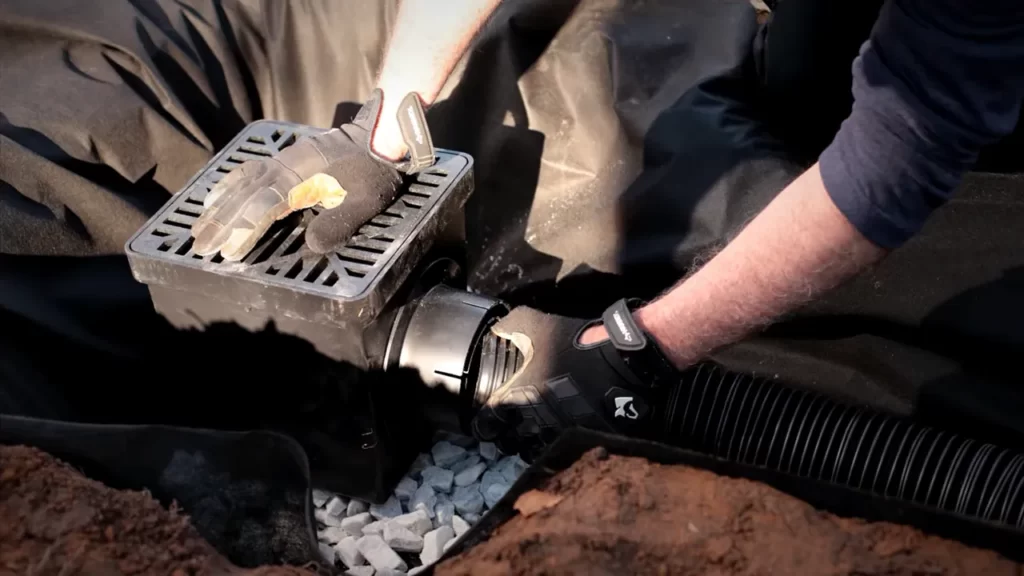
Planning And Preparation
Assessing drainage needs
Before installing a corrugated drain pipe, it is crucial to assess your drainage needs. This involves examining the existing drainage system and identifying areas of concern. By understanding the current situation, you can determine whether a corrugated drain pipe is necessary and where it should be installed.
Identifying problem areas
One of the key steps in the planning and preparation process is identifying problem areas in your landscape. These areas may include water pooling, erosion, or dampness around your property. By pinpointing these issues, you can plan for effective drainage solutions and determine the best locations for your corrugated drain pipe.
Determining the required pipe length
Once you have assessed your drainage needs and identified problem areas, it’s time to determine the length of corrugated drain pipe you will require. This can be done by measuring the distance between the problem areas, taking into consideration any twists or turns the pipe will need to make. Having an accurate measurement will ensure you purchase the correct amount of pipe, minimizing waste and saving you time and money.
Preparing the necessary tools and materials
Proper preparation is essential to a successful installation. To get started, gather the necessary tools and materials:
- Corrugated drain pipe
- Connectors and fittings
- Digging tools
- Safety equipment
Having these items readily available will make the installation process more efficient and help you avoid interruptions or delays.
Corrugated drain pipe
Corrugated drain pipes are flexible, lightweight pipes that are designed to efficiently channel water away from problem areas. These pipes come in various sizes, so ensure you choose the one that suits your specific needs.
Connectors and fittings
To properly connect the sections of corrugated drain pipe together, you’ll need connectors and fittings. These accessories allow for secure and leak-free connections, ensuring the entire system functions effectively.
Digging tools
Digging tools such as shovels and spades are necessary to excavate the trenches where the drain pipe will be installed. The type of soil and the depth of the trench will determine the specific digging tools you will need.
Safety equipment
When working with tools and excavating the ground, it is essential to prioritize safety. Equip yourself with gloves, safety glasses, and appropriate clothing to protect yourself from potential hazards.
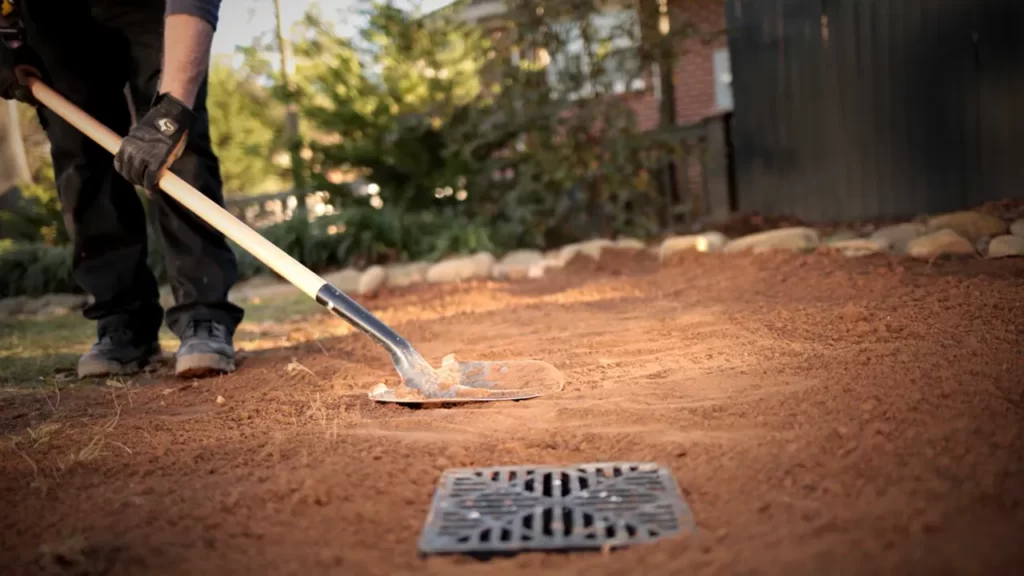
Digging The Trench
When it comes to installing a corrugated drain pipe, one of the most important steps is digging the trench. This process involves careful planning and consideration to ensure the proper placement and functionality of the drain pipe. In this section, we will guide you through the necessary steps for digging the trench, including marking the trench route, considering local regulations and guidelines, avoiding utility lines and obstructions, excavating the trench, and creating a gradual slope for proper drainage.
Marking the trench route
Before you start digging, it is crucial to mark the trench route. This will help you envision the path of the drain pipe and ensure that it is positioned in the most effective location. Use spray paint or string to mark the route on the ground, considering factors such as the desired drainage pattern and the proximity to existing structures.
Consider local regulations and guidelines
Before digging, it is important to research and understand any local regulations and guidelines regarding trench digging. This will help you avoid any legal issues and ensure that your installation complies with local standards. Check with your local municipality or utility companies for information on utility line locations and any required permits.
Avoid utility lines and obstructions
When digging the trench, it is crucial to avoid damaging utility lines and other obstructions. This is not only for your safety but also to prevent any disruptions or costly repairs. Before excavating, call your local utility companies to mark the locations of buried lines. Take extra precautions when digging near existing structures or trees to avoid potential damage.
Excavating the trench
Once you have marked the trench route and ensured there are no utility lines or obstructions in the way, it’s time to excavate the trench. Digging a trench is a labor-intensive task, so it’s important to plan accordingly and gather the necessary tools. Use a shovel, pickaxe, or trenching machine to remove the soil and create a trench of the required depth and width.
Dig to the required depth and width
The depth and width of the trench will depend on the specific requirements of your installation. Typically, the trench should be deep enough to accommodate the drain pipe and allow for proper water flow. The width of the trench should be wide enough to provide ample space for the pipe and allow for proper compaction of backfill material. Refer to the manufacturer’s guidelines or consult a professional for the recommended dimensions.
Create a gradual slope for proper drainage
A proper slope is crucial for the efficient functioning of the corrugated drain pipe. To ensure proper drainage, create a gradual slope along the length of the trench. This slope should direct water towards the desired outlet, ensuring that it does not collect or cause any damage. The recommended slope for a drain pipe is typically 1/8 inch per foot or 1 percent.
In conclusion, digging the trench is a crucial step in installing a corrugated drain pipe. By marking the trench route, considering local regulations, avoiding utility lines and obstructions, excavating to the required dimensions, and creating a proper slope, you can ensure a successful and functional drainage system for your property.
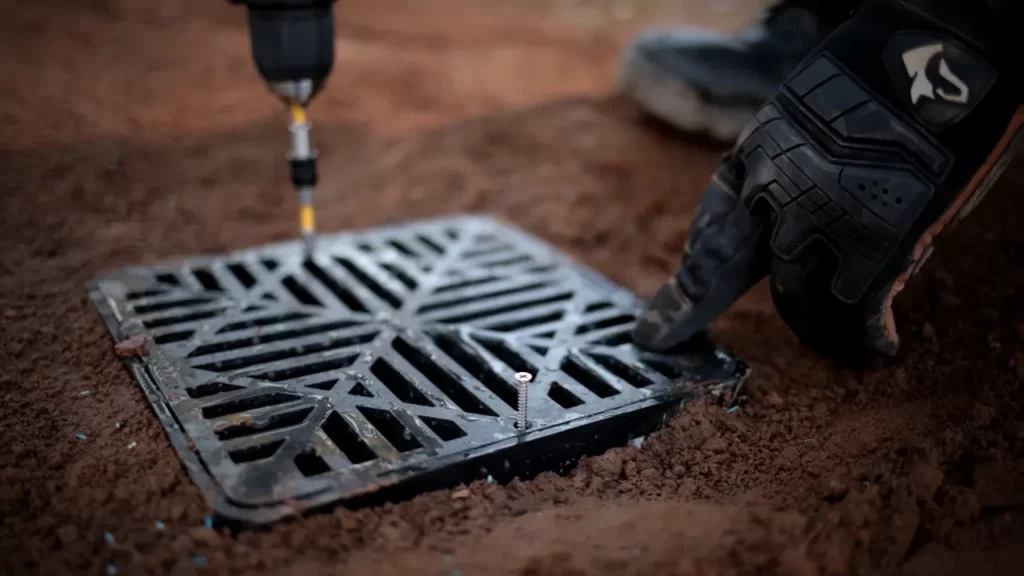
Installing The Corrugated Drain Pipe
Proper installation of a corrugated drain pipe is crucial for ensuring efficient drainage and preventing water buildup around your property. In this section, we will guide you through the process of installing the corrugated drain pipe, from connecting the sections to backfilling the trench. Follow these steps to ensure a secure and effective installation.
Connecting sections of pipe
Before you begin the installation, make sure you have measured and determined the length of the drain pipe required. Once you have the correct length, it’s time to connect the sections of pipe. Follow these steps:
- Lay out the sections of pipe along the trench, ensuring proper alignment.
- Overlap the ends of the two sections by at least four inches for a secure connection.
- Insert one end of the pipe into the other, making sure they fit snugly together.
- Secure the connection with adhesive or waterproof tape to prevent any leaks.
Joining with connectors or fittings
In some cases, you may need to join the corrugated drain pipe with connectors or fittings. This is especially true when redirecting the flow of water or connecting the pipe to an outlet. Follow these steps:
- Choose the appropriate connector or fitting for your specific needs.
- Insert one end of the connector into the corrugated drain pipe.
- Secure the connection by tightening any locks or clamps.
Ensuring proper alignment and secure connection
Proper alignment and a secure connection are crucial for the optimal performance of the corrugated drain pipe. To ensure this, follow these tips:
- Ensure the drain pipe is positioned in a straight line along the trench.
- Check for any gaps or misalignments between the sections and connectors.
- Tighten any loose connections to prevent water leakage.
Installing end caps and outlets
End caps and outlets provide a finishing touch to the corrugated drain pipe installation. Here’s how to install them:
- Insert an end cap at the end of the drain pipe to prevent debris from entering.
- If you need to direct the water flow, attach an outlet fitting to the desired location on the pipe.
Prevent debris from entering the pipe
Preventing debris from entering the corrugated drain pipe is essential for maintaining its functionality. Consider implementing these measures:
- Install a filter or grate at the pipe inlet to catch large debris.
- Regularly clean the filter or grate to prevent clogging.
Maintain controlled water flow
To ensure proper drainage, it’s important to maintain controlled water flow within the corrugated drain pipe. Follow these tips:
- Avoid slopes that are too steep, as they can cause excessive water flow and erode the soil.
- Monitor the drainage system regularly to detect any blockages or obstructions.
Backfilling the trench
Once the drain pipe is installed, it’s time to backfill the trench. Here’s how to do it:
- Gradually refill the trench with soil, ensuring even distribution.
- Tamp down the soil lightly after each layer to prevent settling.
Fill in the trench with soil
Once the trench is backfilled, it’s important to fill it in with soil to restore the original ground level. Follow these steps:
- Add soil to the trench until it reaches the desired level.
- Spread and level the soil using a rake or shovel.
Compact the soil to avoid settling
Compacting the soil is crucial to prevent settling, which can affect the stability of the drain pipe. Take the following steps to compact the soil:
- Use a tamper or compaction tool to compress the soil.
- Work in small sections, applying pressure evenly.
By following these steps, you can ensure a proper installation of your corrugated drain pipe, allowing for efficient water drainage and protecting your property from water buildup.
Maintaining And Extending The Drainage System
Proper maintenance and regular inspection of your corrugated drain pipe system is crucial to ensure its effectiveness in managing water flow and reducing the risk of water damage to your property. By taking the time to understand the importance of regular inspections and cleaning, clearing debris and blockages, identifying potential issues early on, extending the drain pipe, and considering additional drainage needs, you can safeguard your property and keep your drainage system working efficiently.
Regular inspection and cleaning
Regular inspection and cleaning of your corrugated drain pipe system are essential to keep it functioning optimally. By conducting routine inspections, you can identify any signs of damage or blockage early on and address them before they escalate into more significant problems.
Cleaning the drain pipe regularly helps prevent the accumulation of debris, silt, or other obstructions that may hinder water flow. To clean the pipe, carefully remove the surface debris, such as leaves and twigs, using a rake or a gloved hand. For a more thorough cleaning, consider using a high-pressure water jet or a drain snake to remove any clogs or build-up inside the pipe.
Clearing debris and blockages
Over time, debris and blockages can accumulate in your corrugated drain pipe, obstructing the flow of water. It is crucial to promptly clear these obstructions to prevent water backup and potential damage to your property.
To clear debris and blockages, start by visually inspecting the drain pipe, looking for any visible signs of blockage such as standing water or slow drainage. If a blockage is detected, use a drain snake or auger to break up and remove the debris. Avoid using chemicals or harsh solvents, as they can damage the pipe material.
Identifying potential issues early on
Early identification of potential issues in your drain pipe system can save you from costly repairs and water damage. Regular inspections allow you to spot warning signs such as cracks, leaks, or sagging sections.
Pay close attention to any changes in water flow, unusual odors, or dampness around the drain pipe area. These can signify underlying issues that require immediate attention. If you notice any signs of damage or potential issues, it is recommended to consult a professional to assess the situation and provide appropriate solutions.
Extending the drain pipe
In some cases, you may find the need to extend your existing corrugated drain pipe system to accommodate changes in your landscape or additional drainage requirements. Extending the drain pipe requires proper planning and installation to ensure optimal performance.
To extend the drain pipe, follow these steps:
- Determine the desired length and location for the extension.
- Excavate a trench to the appropriate depth and width for the new section of drain pipe.
- Connect the new section of pipe to the existing pipe using a durable and watertight coupler or connector.
- Backfill the trench with soil, ensuring proper compaction to avoid future settling.
- Test the extended drain pipe by running water through it to ensure a smooth and uninterrupted flow.
Considering additional drainage needs
When extending or maintaining your corrugated drain pipe system, it is essential to consider any additional drainage needs that may arise. Assess your property’s topography and landscaping to identify areas prone to water accumulation or poor drainage.
Consider installing additional catch basins or downspout extensions in areas where water tends to pool or flow excessively. These additions can help redirect water away from vulnerable areas, preserving the integrity of your property.
Remember to regularly inspect and maintain these additional drainage features to ensure their effectiveness in managing water flow.
Frequently Asked Questions
How Deep Should A Corrugated Drain Be Buried?
A corrugated drain should be buried at a depth that allows for proper drainage, usually between 12 and 18 inches. Burying it deeper than this can hinder its ability to effectively drain water.
What Is The Slope For Corrugated Drain Pipe?
The slope for corrugated drain pipe should be at least 1/8 inch per foot for optimal drainage.
How Do You Connect Corrugated Drain Pipes?
To connect corrugated drain pipes, you need to follow these steps: 1. Clean the ends of the pipes to remove any dirt or debris. 2. Apply a generous amount of PVC primer to both the inside of the fittings and the outside of the pipes.
3. Apply PVC cement to both the fittings and the pipes. 4. Push the pipes into the fittings, twisting slightly to ensure a tight fit. 5. Allow the cement to dry for at least 24 hours before using the drain system.
Do The Holes In Corrugated Pipe Go Up Or Down?
The holes in corrugated pipe should go down.
Conclusion
Installing corrugated drain pipe is a simple and cost-effective solution for redirecting water away from your property. By following the steps outlined in this blog post, you can successfully install corrugated drain pipe and alleviate any drainage issues you may be experiencing.
Remember to carefully plan your layout, dig the trench to the appropriate depth, and securely connect the pipes. With proper installation, you can prevent water damage and maintain the integrity of your property. Don’t wait, start the installation process today and take control of your drainage needs.
